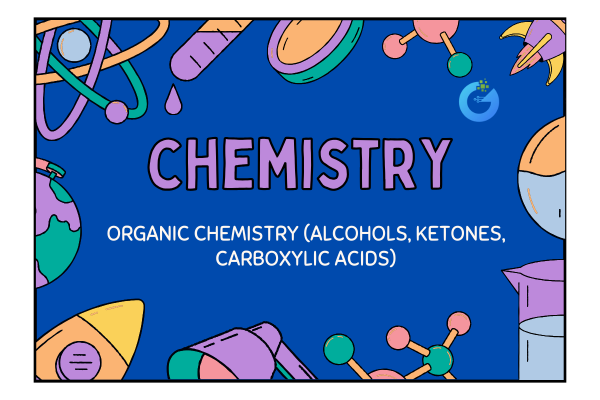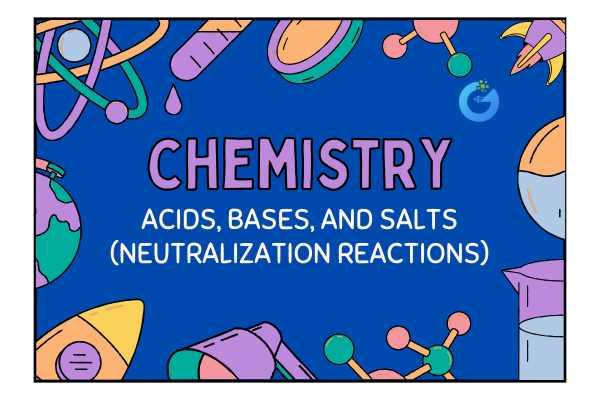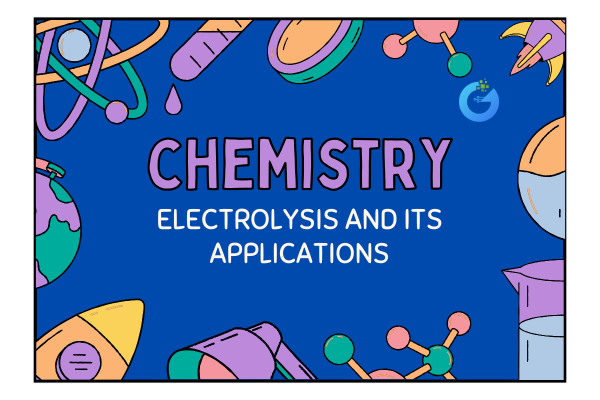Introduction
Have you ever used a hand sanitizer and smelled something sharp? Or noticed the sour tang of vinegar in food? What about the distinct smell of nail polish remover?
All these experiences are connected to organic compounds—specifically alcohols, ketones, and carboxylic acids. These are everyday chemicals that may sound like lab jargon but are surprisingly common in your life.
In this Class 10 Chemistry topic, we break down these organic compounds, understand their structures, learn how they behave, and see where they show up around us—from household products to biological systems.
expert-led Chemistry classes – visit our website to learn more
What Is Organic Chemistry?
Organic chemistry is the study of carbon-based compounds, particularly those that include hydrogen, oxygen, and sometimes nitrogen, sulfur, and halogens.
Why carbon?
- Carbon has a valency of 4, meaning it can form four covalent bonds
- It can make long chains, branches, and even rings
- It can form single, double, or triple bonds with other atoms
This flexibility allows it to create millions of different compounds—from fuels and plastics to DNA and medicines.
Functional Groups – The Signature of a Compound
Every organic compound has a “functional group”—a specific atom or group of atoms that gives it unique chemical properties.
| Group Name | Symbol | Example | Role or Behavior |
| Alcohol | –OH | Ethanol (C₂H₅OH) | Soluble, burns cleanly, antiseptic |
| Ketone | –CO– | Acetone (CH₃COCH₃) | Solvent, sweet-smelling |
| Carboxylic Acid | –COOH | Acetic acid (CH₃COOH) | Acidic, reacts with bases, sour taste |
Alcohols (–OH Group)
General Formula: R–OH (where R is a carbon chain)
Example:
Ethanol (C₂H₅OH) – the type of alcohol found in alcoholic drinks and sanitizers.
Properties:
- Colorless liquid
- Volatile (evaporates easily)
- Soluble in water
- Burns with a blue, clean flame
- Acts as a disinfectant and solvent
Common Uses:
- Sanitizers and antiseptics
- Fuel additive (ethanol blended petrol)
- Medicines and cough syrups
- Perfumes and deodorants
Ketones (–CO– Group)
General Formula: R–CO–R′
(Where R and R′ are carbon chains on either side of the carbonyl group)
Example:
Acetone (CH₃COCH₃) – most common ketone, found in nail polish remover.
Properties:
- Colorless, volatile liquid
- Pleasant or sweetish smell
- Easily dissolves many substances (great solvent)
- More stable than aldehydes
Common Uses:
- Nail polish remover
- Plastic and fiber production
- Cleaning agents in labs
- Intermediate in chemical industries
Carboxylic Acids (–COOH Group)
General Formula: R–COOH
Example:
Acetic acid (CH₃COOH) – gives vinegar its sour taste.
Properties:
- Sour in taste
- Turns blue litmus red (acidic)
- Reacts with bases to form salts and water
- Reacts with alcohols to form esters (pleasant-smelling compounds)
Common Uses:
- Food preservative and flavoring (vinegar)
- Production of soaps and detergents
- Raw material in synthetic fibers
- Biological acids (citric acid in lemons, lactic acid in muscles)
Reactions of Organic Compounds
1. Combustion of Alcohols
Alcohols burn in oxygen to release carbon dioxide, water, and energy.
Reaction:
C₂H₅OH + 3O₂ → 2CO₂ + 3H₂O + Heat
Used in clean fuel like bioethanol.
2. Esterification
A reaction between a carboxylic acid and alcohol forms an ester (sweet-smelling) and water.
Reaction:
CH₃COOH + C₂H₅OH → CH₃COOC₂H₅ (ethyl ethanoate) + H₂O
Used in perfumes and artificial flavors
3. Neutralization Reaction
Carboxylic acids react with bases to form salts and water (just like mineral acids).
Reaction:
CH₃COOH + NaOH → CH₃COONa (sodium acetate) + H₂O
Everyday Applications of These Compounds
| Compound | Use Case |
| Ethanol | Hand sanitizers, fuel, disinfectant |
| Acetone | Nail polish remover, cleaning solvents |
| Acetic acid | Vinegar in cooking, preservative |
| Esters | Perfumes, food flavorings |
Core Concepts Table
| Concept | Description |
| Functional Group | Determines chemical behavior of an organic compound |
| Alcohol | Organic compound with –OH group |
| Ketone | Organic compound with –CO– group (carbon double bonded to O) |
| Carboxylic Acid | Compound with –COOH group, behaves as an acid |
| Esterification | Reaction between alcohol and acid to form an ester |
Frequently Asked Questions
Q1. How is alcohol different from water?
Alcohol contains a carbon chain attached to the –OH group, giving it different properties like volatility and smell.
Q2. Why are ketones used as solvents?
They dissolve many organic substances and evaporate quickly without leaving residue.
Q3. What makes acids like vinegar taste sour?
Carboxylic acids release H⁺ ions in water, making the solution acidic.
Q4. What is an ester used for?
Esters are used in perfumes and flavoring agents due to their fruity smells.
Q5. Are all alcohols safe to consume?
No. Ethanol in small amounts is safe (as in drinks), but others like methanol are highly toxic.
Fun Facts
- Vinegar is a 4–6% solution of acetic acid in water.
- Ketones are also released in your body during fat breakdown (especially during fasting or keto diet).
- Ethanol can be made naturally by fermenting sugar using yeast.
- The scent of bananas, apples, and strawberries comes from natural esters.
Conclusion
From the bottle of vinegar in your kitchen to the scent in your deodorant, organic compounds like alcohols, ketones, and carboxylic acids are everywhere.
Understanding their structure, behavior, and uses gives you a strong foundation not only in Chemistry but also in the world around you—because chemistry isn’t just in labs, it’s in life.
So, the next time you clean your hands or smell a perfume, remember: it’s all about functional groups!








